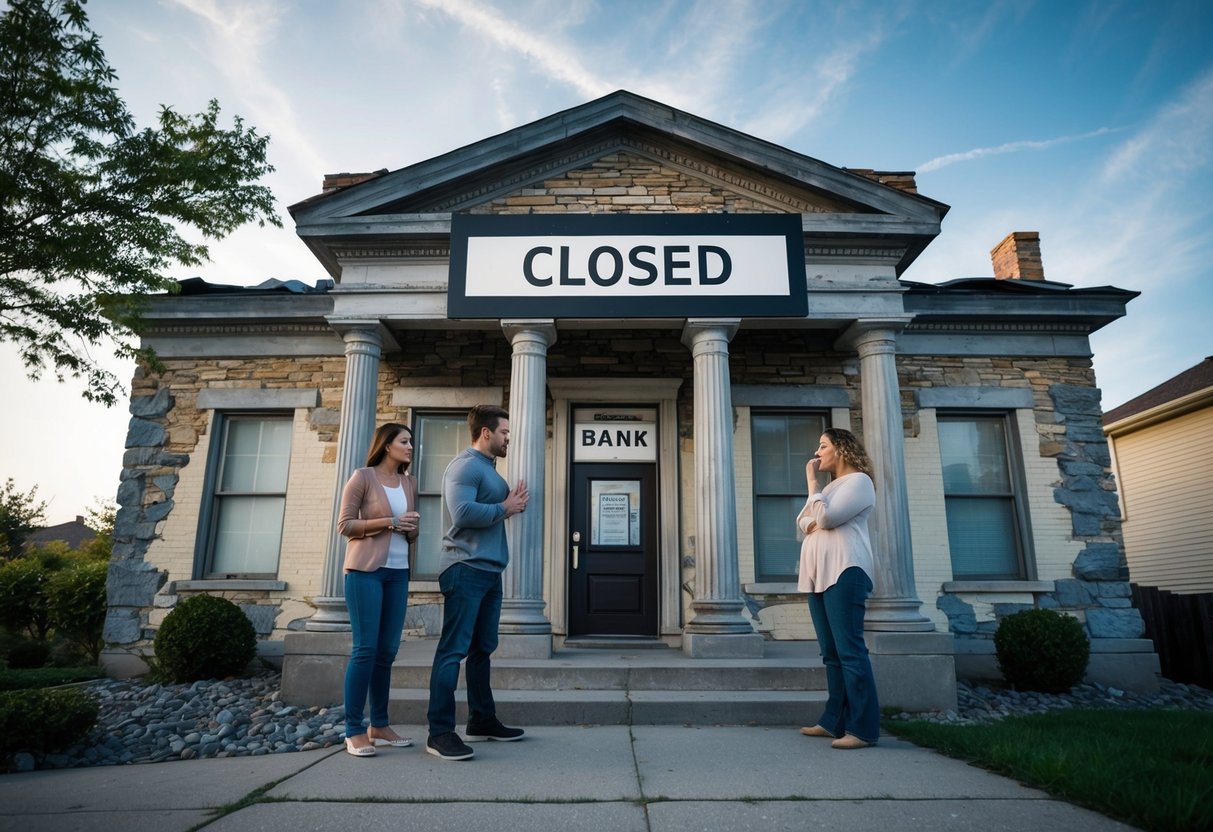Rent to buy house schemes, also known as rent-to-own agreements, offer a path to homeownership for individuals who may not have the means for a traditional property purchase. These arrangements typically involve a lease agreement combined with an option to purchase the property at the end of the rental period, usually at a pre-agreed price. This can be an attractive option for those who need time to save for a deposit or improve their credit rating before securing a mortgage.

Understanding how rent to buy schemes work is crucial before considering this homeownership strategy. In essence, you’re a tenant with the potential to become a property owner without initially securing a conventional home loan. You’ll pay rent, which is often higher than market rate to compensate for the future purchase option. Additionally, you may pay an upfront option fee and ongoing option premiums, contributing towards the purchase price.
Key Takeaways
- Rent to buy schemes allow you to lease a property with an option to purchase later.
- They offer a way for potential homeowners to circumvent traditional financing barriers.
- Legal and financial understanding is vital before entering such agreements.
Understanding Rent to Buy Schemes
Rent to buy schemes, also known as rent-to-own agreements, offer you a path to homeownership that differs from the traditional method of purchasing a home. They combine the flexibility of renting with the long-term potential of buying.
In Australia, the rent to own concept allows you to lease a house with an option to purchase it later. This option to buy typically comes at a predetermined price, which you agree upon at the beginning of your lease. During your rental period, a portion of your rent may go towards the purchase price of the home.
These schemes have certain features:
- Lease Period: Generally spans from three to five years.
- Option to Buy: You pay an ‘option fee’, which gives you the right, but not the obligation, to buy the property.
- Purchase Price: Agreed in advance, providing you with price certainty.
Below is an outline of how the scheme typically works:
- Lease Agreement: You enter a standard lease to rent the property.
- Option Agreement: Concurrently, you have an option agreement granting the right to purchase the property in the future.
- Option Fee: Usually a one-off payment; may be non-refundable.
- Rent Payments: Paid as per a typical lease; sometimes higher than market rate to account for the future purchase.
- Future Purchase: At the end of the lease, you may buy the property at the agreed price.
Rent to buy schemes can be beneficial if you’re not immediately ready to secure a mortgage, allowing you to lock in a purchase price while you save or improve your borrowing capacity. However, it’s important to read and understand the terms thoroughly, and consider seeking legal advice before entering into such an agreement.
Pros and Cons of Rent to Buy

In evaluating the Rent to Buy housing scheme, it’s important to understand how these agreements can pave the way to home ownership and what risks they might entail.
Advantages of Rent to Buy
Rent to Buy schemes offer a unique path to owning a home that combines the flexibility of renting with the benefits of building equity — a share in the property’s value — over time. If you’re an aspiring homeowner, one major benefit is the low deposit structure. Often, you will find that the entry requirements are less stringent than those for a traditional home loan.
- Build Equity Early: As you pay rent, a portion may contribute towards the home’s equity, meaning you’re slowly gaining a financial stake in the property even before you officially own it.
- Fixed Purchase Price: Generally, you lock in a purchase price at the start, potentially sheltering you from future market upswings during the lease period.
Risks and Considerations
While the opportunity to get on the property ladder might seem enticing, there are considerable risks and factors to watch out for with Rent to Buy schemes.
- Higher Overall Costs: These schemes often involve higher weekly payments due to the added option-to-buy fee. You may end up paying more than traditional rent, impacting your finances.
- Market Risk: Should the market face a downturn, you might find yourself committed to a price above the property’s value at the time of purchase.
- Default Risk: In cases of financial hardship, defaulting on a Rent to Buy arrangement could lead to losses greater than in a standard rental situation.
The Consumer Action Law Centre advises caution with these schemes, as they may not always be consumer-friendly. It is crucial to have a clear understanding of the terms and to seek advice before entering such agreements – always consider your ability to finance the eventual purchase without putting yourself under undue stress.
Financial Implications
When you enter a rent-to-buy scheme, understanding the financial implications is crucial to make an informed decision. Typically, a rent-to-buy scheme involves a deposit, akin to a non-refundable deposit, which is an upfront payment often referred to as an option fee. This payment secures your right to purchase the property in the future. Here’s a breakdown of the key financial aspects:
- Repayments: You pay a higher rent than the market rate, with part of it contributing towards the future purchase price of the property.
- Purchase Price: This is often fixed at the beginning of the agreement, protecting you from the rising property market, but also meaning you won’t benefit if the property value decreases.
- Fees: Beyond standard rent, option-to-buy fees may apply, which can be substantial.
Additional Costs:
- Stamp Duty: You’ll need to consider stamp duty, which varies depending on the property’s purchase price and the threshold set by state law.
- Home Loan: When it’s time to secure a mortgage, lenders will assess your eligibility based on your credit history, income, and the property value.
Considerations:
- Lenders Mortgage Insurance (LMI): If your deposit is less than 20% of the property’s value, you may require LMI. This insurance protects the bank against loan default.
- Solicitor: Engaging a solicitor to review your rental agreement is important to understand all legal and financial obligations.
- Down Payment: This is synonymous with a deposit. Be prepared for significant initial payments.
It’s imperative that you review all potential costs with a financial advisor or solicitor to ensure the rent-to-buy scheme aligns with your financial goals.
Legal and Contractual Aspects of Rent to Buy

Rent to buy schemes have profound legal and contractual components that directly affect your pathway to homeownership. Understanding the lease agreement details and your obligations and rights is essential for making informed decisions.
Lease Agreement Details
Your lease agreement will outline the terms of your rental period, typically 3-5 years, during which you’ll have an option to purchase the property. This period provides you the time to save a deposit while part of your rent contributes towards the purchase price.
- Option to Buy Fee: This is a non-refundable fee, distinct from the security deposit, which grants you the option to purchase the property.
- Rental Payments and Equity Contribution: Your regular rent payments are detailed in the lease, part of which may contribute towards building equity in the property.
- Maintenance Obligations: Usually, as the tenant, you may be responsible for the property’s maintenance during the lease term.
Obligations and Rights
You’ll need to understand your rights as a potential buyer and obligations as a tenant.
- Right to Purchase: The option to buy enables you to purchase the property at a predetermined price after the rental period.
- Legal Owner and Vendor: Until you exercise the option to buy, the vendor remains the legal owner.
- Council Rates and Charges: Usually, the legal owner handles council rates, but your agreement might vary.
- Default Consequence: If you default on the lease, you risk losing the option to buy and any equity contribution made.
- Commercial Mortgage: If the vendor has a mortgage on the property, it might affect your agreement.
When entering a rent to buy scheme, it’s crucial to consult with a legal professional. Legal advice ensures you fully understand the terms and how they affect your tenancy and potential ownership.
The Australian Market Overview
Before diving into the intricacies of rent-to-buy schemes in Australia, understanding the current property market trends and state-specific details is essential for your decision-making.
Market Trends and Property Prices
The Australian property market exhibits various trends that affect the feasibility and attractiveness of rent-to-buy schemes. Historically, property prices in Australia have seen a steady increase, with CoreLogic reporting periodic rises and falls that influence median property prices. As a renter contemplating a rent-to-buy agreement, it is important to compare the market rent you’d pay against the potential market value and sale price at the conclusion of the lease period. This ensures that the price you commit to today aligns with the expected future value, factoring in possible capital gains.
State-Specific Information
Each state and territory in Australia has its own nuances when it comes to the property market:
- South Australia and Victoria: These states offer variations of the rent-to-buy scheme, often tied with state government incentives like the First Home Owners Grant.
- State Governments: They may have specific schemes to assist first home owners. It’s crucial to check with your local state authority to see if they support rent-to-buy initiatives, as these can significantly affect your financial commitment and benefits.
- OwnHome: As a prospective buyer, if you are considering rent-to-buy schemes, look out for programs that may offer lower entry prices, allowing renters to build equity in a property before owning it outright.
By keeping abreast of the market trends and state-specific information, you place yourself in a position to make an informed decision on whether a rent-to-buy scheme is suitable for your situation in the Australian property landscape.
Alternatives to Rent to Buy Schemes
When looking to climb the property ladder, especially if you’re facing financial constraints, you might explore options beyond rent to buy schemes. Here are several alternatives that can potentially suit your situation if you have a lower income or can’t afford the conventional 20% deposit.
Family Guarantee
With a Family Guarantee, your family members can use their own property as security for your loan, reducing the need for a large deposit.
Shared Ownership
Shared ownership schemes allow you to purchase a share of a property, typically between 25% and 75%, and pay rent on the remaining share. You can increase your share over time.
First Home Owner Grant (FHOG)
Australian states and territories offer a First Home Owner Grant that you can apply for when buying your first home, which might cover a significant portion of a deposit.
First Home Super Saver (FHSS) Scheme
The FHSS scheme allows you to save money for your first home inside your superannuation fund, taking advantage of the concessional tax treatment of super.
First Home Loan Deposit Scheme (FHLDS)
The FHLDS enables eligible first-home buyers to purchase a home with a deposit as low as 5%, with the government guaranteeing the difference up to a 20% deposit.
Not-for-Profit Options
Organisations such as Assemble Communities offer pathways for low to moderate-income earners to secure a home, with varied models that sidestep the need for large initial fees.
Remember to thoroughly research these alternatives and consider your financial circumstances closely before deciding. Each option has its eligibility criteria and conditions which should align with your home buying strategy.
Getting Started with Rent to Buy
When considering a rent to buy scheme, it’s crucial to comprehend the application process and the obligations that follow as a tenant-buyer. This journey involves a combination of renting with an option to secure ownership of your home, so understanding the specifics is essential.
Application Process
To apply for a rent to buy (RTB) scheme, you typically start by expressing your interest to a developer or seller offering such an arrangement. The process often includes:
- Filling out an application: Detailing your personal and financial information.
- Assessing affordability: Confirming that your finances can support the rent payments and potential future purchase price.
Financial scrutiny is an integral part at this stage; you need to ensure that you can manage the usual rental costs plus any additional option fees. Lenders or developers will determine your eligibility based on your financial situation, including your ability to eventually finance the future purchase price of the property.
Moving Forward as a Tenant-Buyer
Once your application is approved, you move forward as a tenant-buyer, which entails:
- Agreeing on Terms: Establishing the duration of the rental period, what portion of the rent is attributed to the equity build-up, and the future purchase price.
- Understanding Rent to Buy Details: You pay a regular rent and possibly an additional ‘option to buy’ fee, which may contribute towards the equity in the home.
As a tenant-buyer, you must be clear on when and how you can exercise your option to buy. Typically, you will have the right to purchase the home at a pre-determined price within a specific time frame. During the RTB agreement, you essentially have the chance to save for a deposit while locking in the own home price early on.
Frequently Asked Questions
Rent-to-buy schemes offer an alternative pathway to home ownership, combining elements of renting and buying. Below are common inquiries about these arrangements to help you understand their operation and implications.
How does the rent-to-buy scheme operate in Victoria?
In Victoria, rent-to-buy schemes may involve paying a weekly rent, along with an additional ‘option-to-buy’ fee. This fee contributes towards a deposit for eventually purchasing the home.
Can you access rent-to-own homes with no deposit in New South Wales?
Generally, rent-to-own homes in New South Wales require an upfront ‘option fee’, which serves as a commitment to the future purchase of the property, making it challenging to enter these schemes with no deposit.
Are there rent-to-buy options available for Centrelink recipients?
Yes, Centrelink recipients may access rent-to-buy options; however, eligibility and terms depend on individual scheme providers and their assessment of your financial circumstances.
What benefits do rent-to-buy housing agreements offer?
Rent-to-buy agreements can allow you to lock in a purchase price at the start of the lease, often giving you time to save for a deposit while living in the property.
What are the potential risks associated with rent-to-buy properties?
These properties can come with higher weekly payments, forfeiture of your option fees if you don’t complete the purchase, and potential loss of investment if property values decline.
What is the ‘Help to Buy’ scheme and how does it differ from rent-to-buy programs in Australia?
The ‘Help to Buy’ scheme is a government initiative to co-purchase a home with the help of a shared equity arrangement, distinct from rent-to-buy where you rent a home with an option to purchase it outright later.








